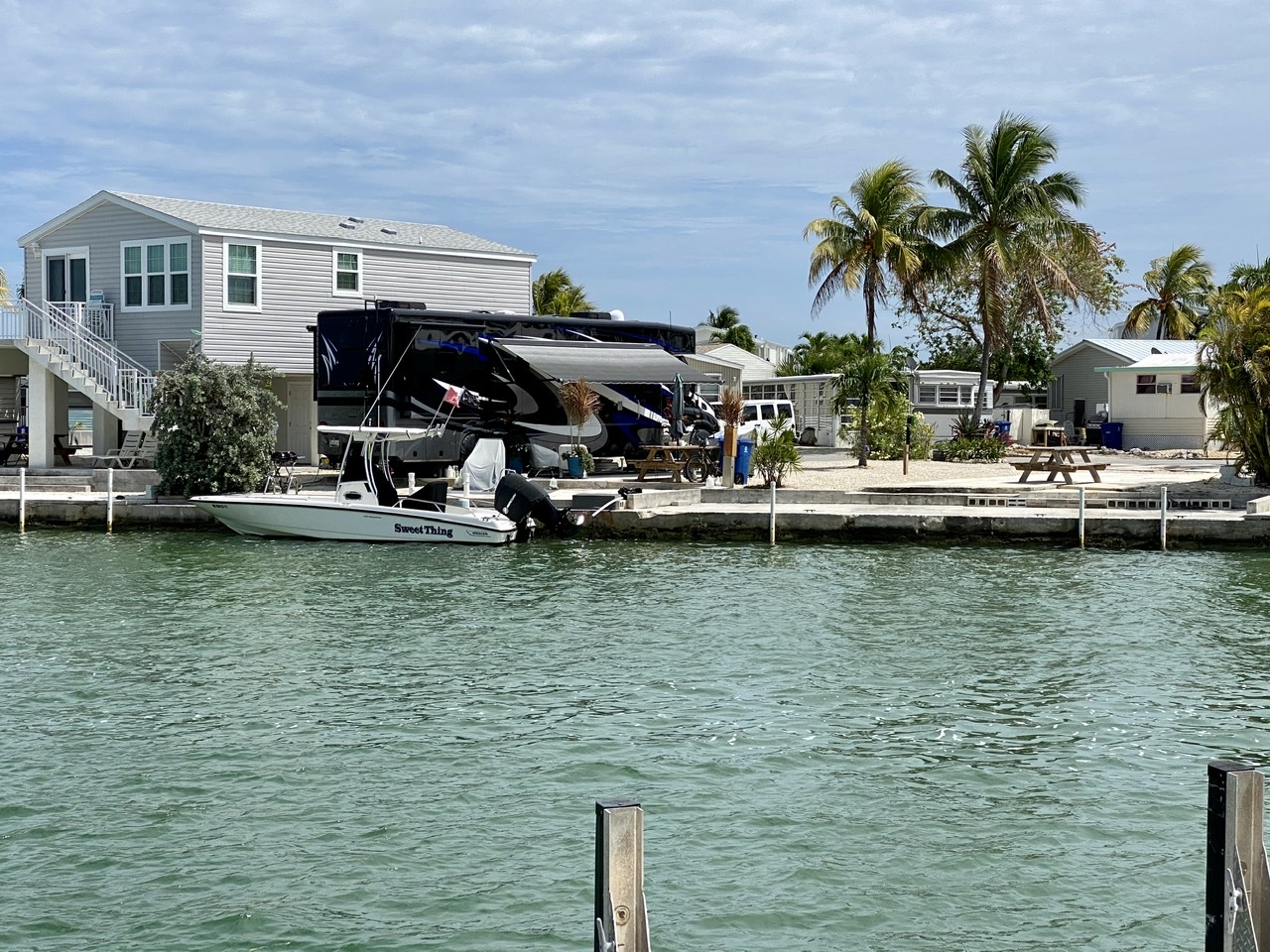The wind shifted and was blowing directly into our canal. This change in wind direction brought in some floating grass and lots of Porutuguese Man-of -War. They are beautiful creatures but sure dont want to get stung by any of them. There were several of them just slightly smaller than my fist but there were hundred about the size of my thumb nail. The larger one had tentacles about 2’ long.
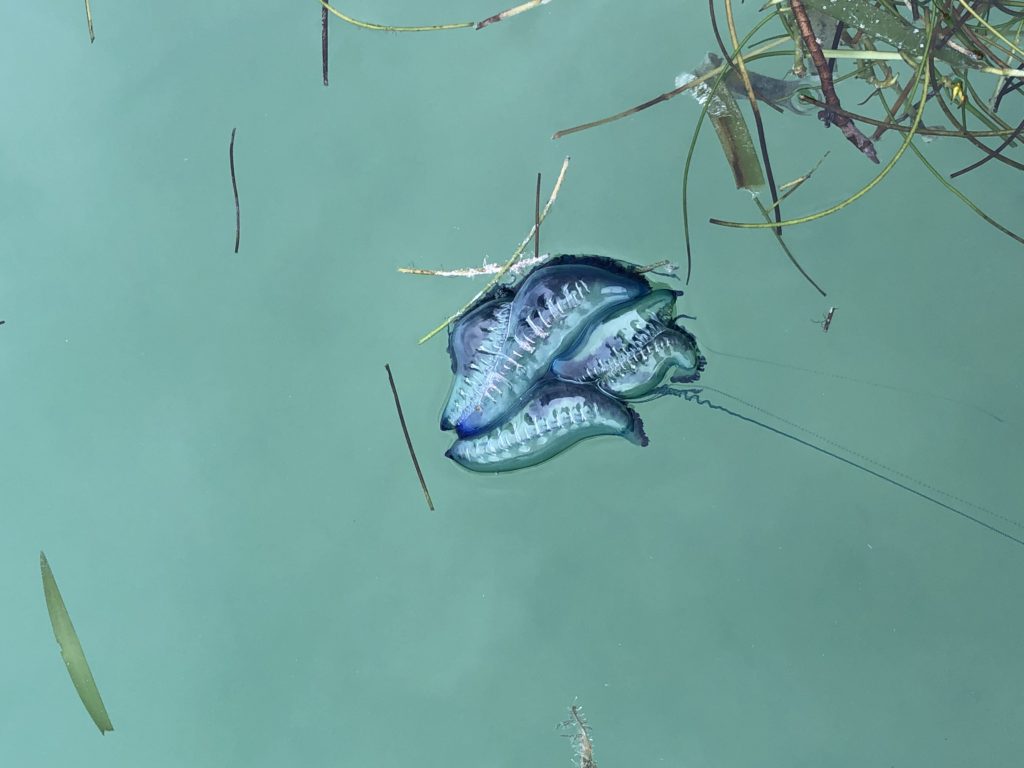
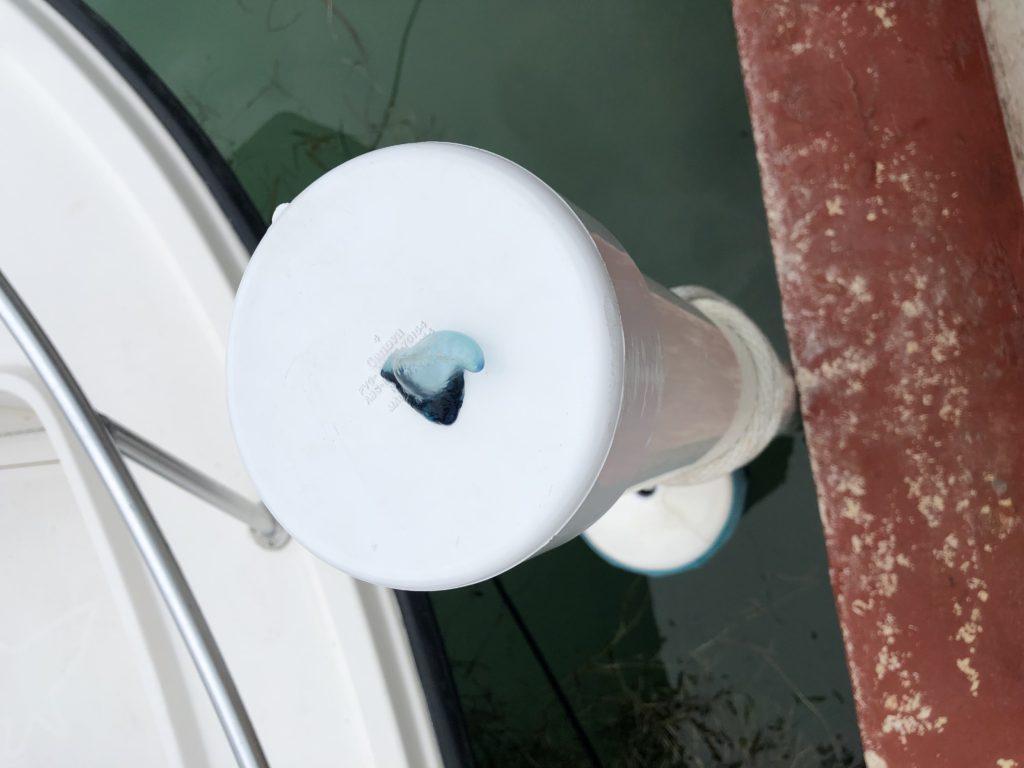
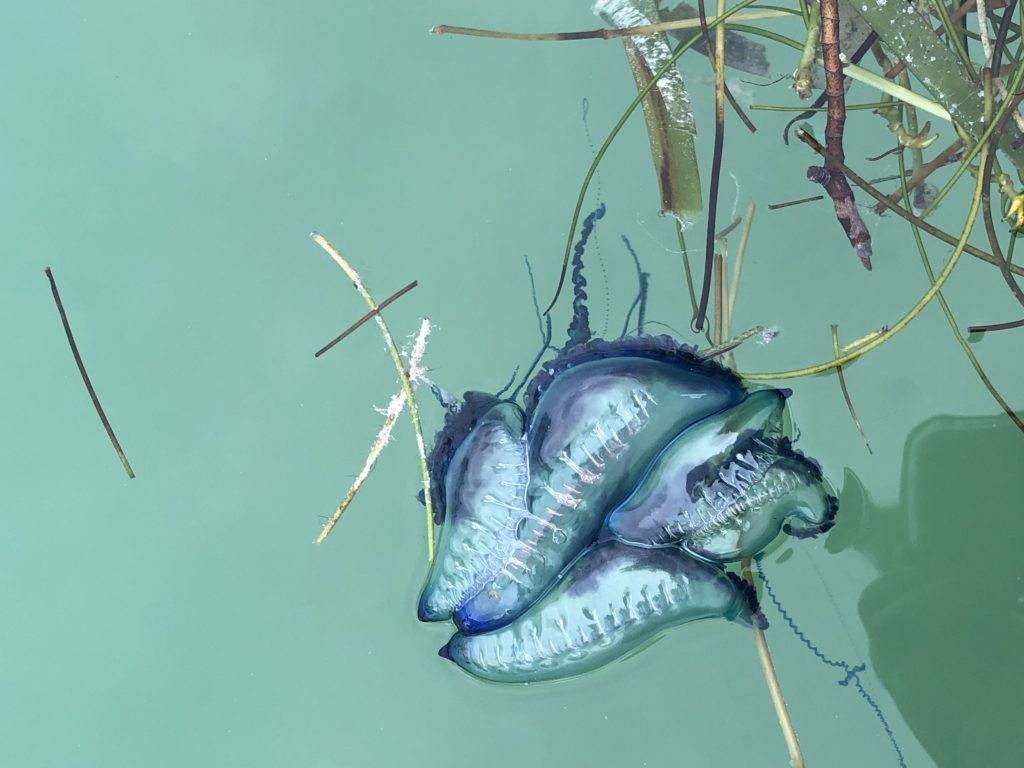
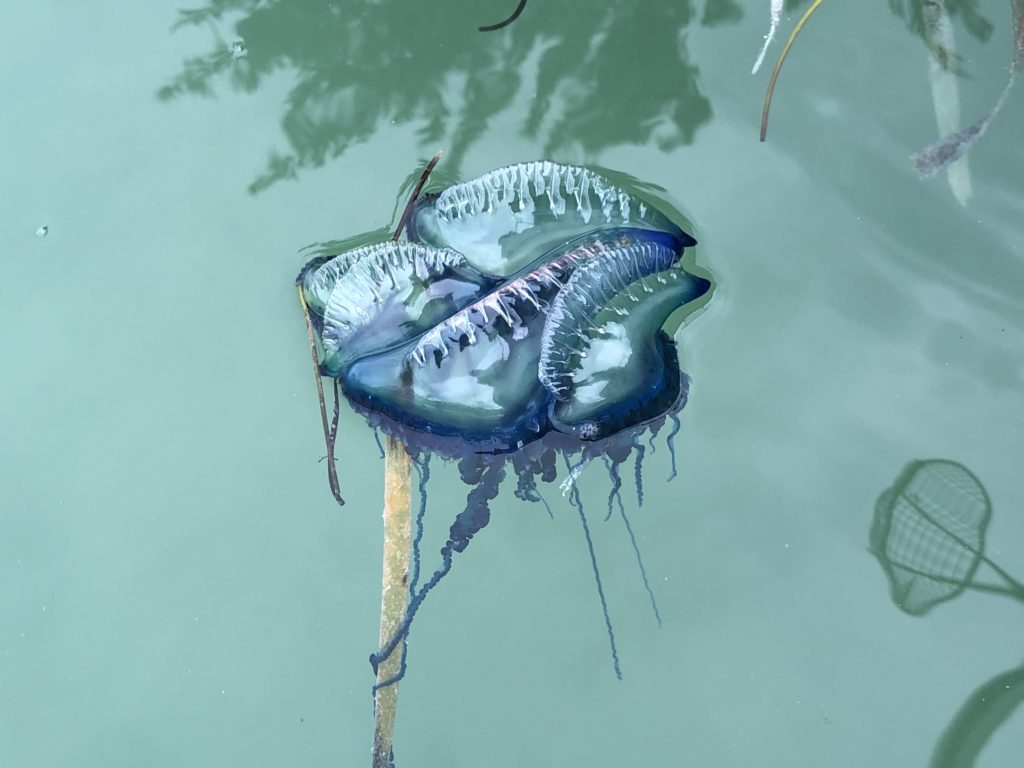
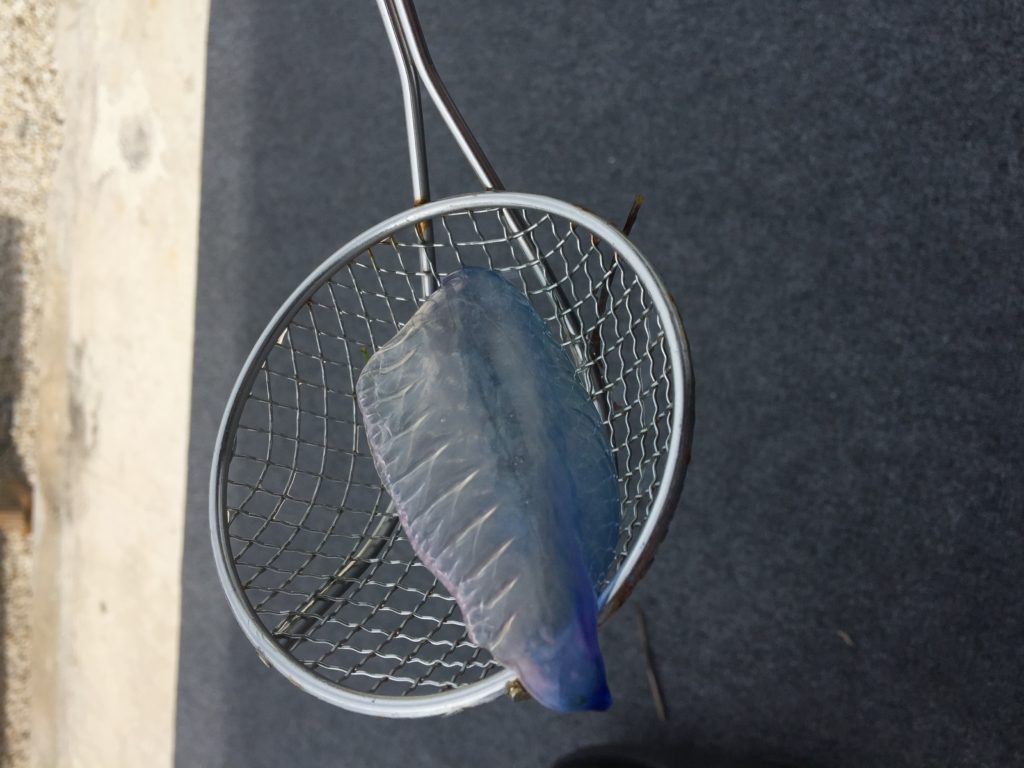
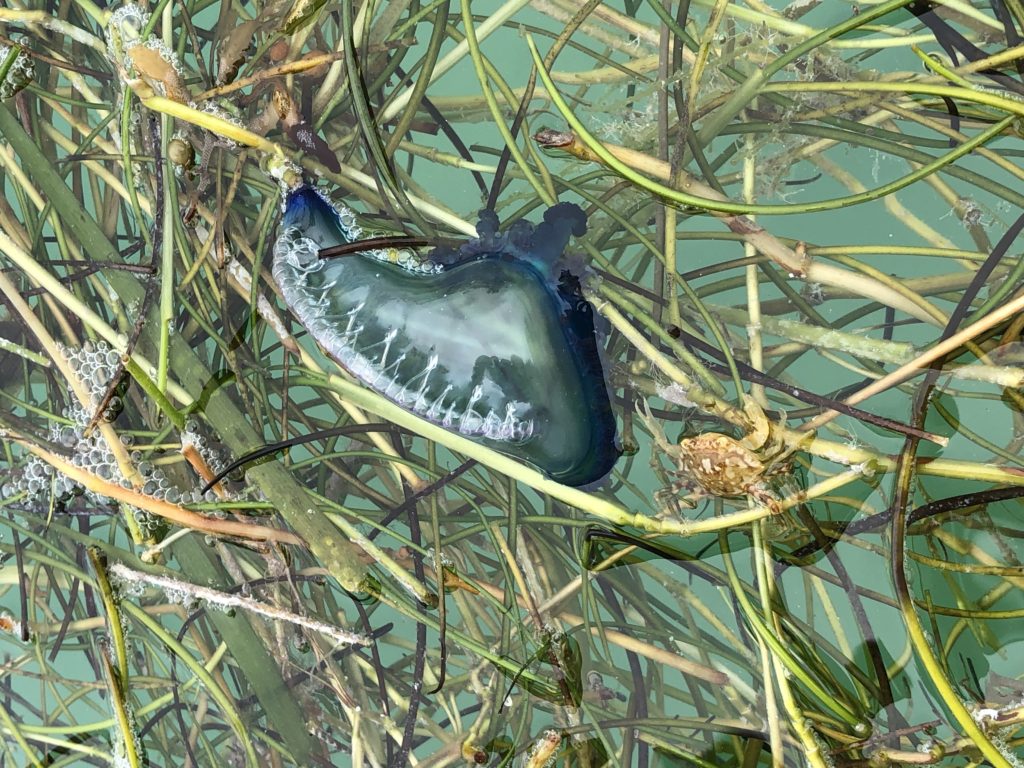
Update: Kayla confirmed that these are indeed Portguese Man-of-War. She also sent me a link on them from the National Georgraphic website. These are definitely small ones as the article states their normal size is 12 inches long, 5 inches wide with tentacles up to 165 feet long. They are not jellyfish but the Portuguese Man-of-War is a siphonophore, an animal made up of a colony of organisms. All of the animals have the same DNA. They can’t separate but work together to achieve one goal. They are fascinating creatures.
The man-of-war comprises four separate polyps. It gets its name from the uppermost polyp, a gas-filled bladder, or pneumatophore, which sits above the water and somewhat resembles an old warship at full sail. Man-of-wars are also known as bluebottles for the purple-blue color of their pneumatophores.
The tentacles are the man-of-war’s second organism made up of dactyzooids. These long, thin tendrils can extend 165 feet in length below the surface, although 30 feet is more the average. They are covered in venom-filled nematocysts used to paralyze and kill fish and other small creatures. For humans, a man-of-war sting is excruciatingly painful, but rarely deadly. But beware—even dead man-of-war washed up on shore can deliver a sting.
Muscles in the tentacles draw prey up to a polyp containing the gastrozooid or digestive organisms. A fourth polyp or gonozooid is the part that reproduces. The Man-o-war reproductive sections have two sexes, male and female. When the man-o-war gathers in large groups, they release their eggs and sperm. The eggs and sperm meet and form their own little gonozooid. The other parts, the dactylzooids, and the gastrozooids slowly bud off from the fertilized organism. Each one shares the genetic information of the original fertilized egg, but they form their own creatures through this asexual budding. Throughout the life of the siphonophore, these creatures stick together, to feed each other, protect each other and navigate for each other, until it comes time for the gonozooids to breed again.
Man-of-wars are found, sometimes in groups of 1,000 or more, floating in warm waters throughout the world’s oceans. They have no independent means of propulsion and either drift on the currents or catch the wind with their pneumatophores. To avoid threats on the surface, they can deflate their air bags and briefly submerge.
